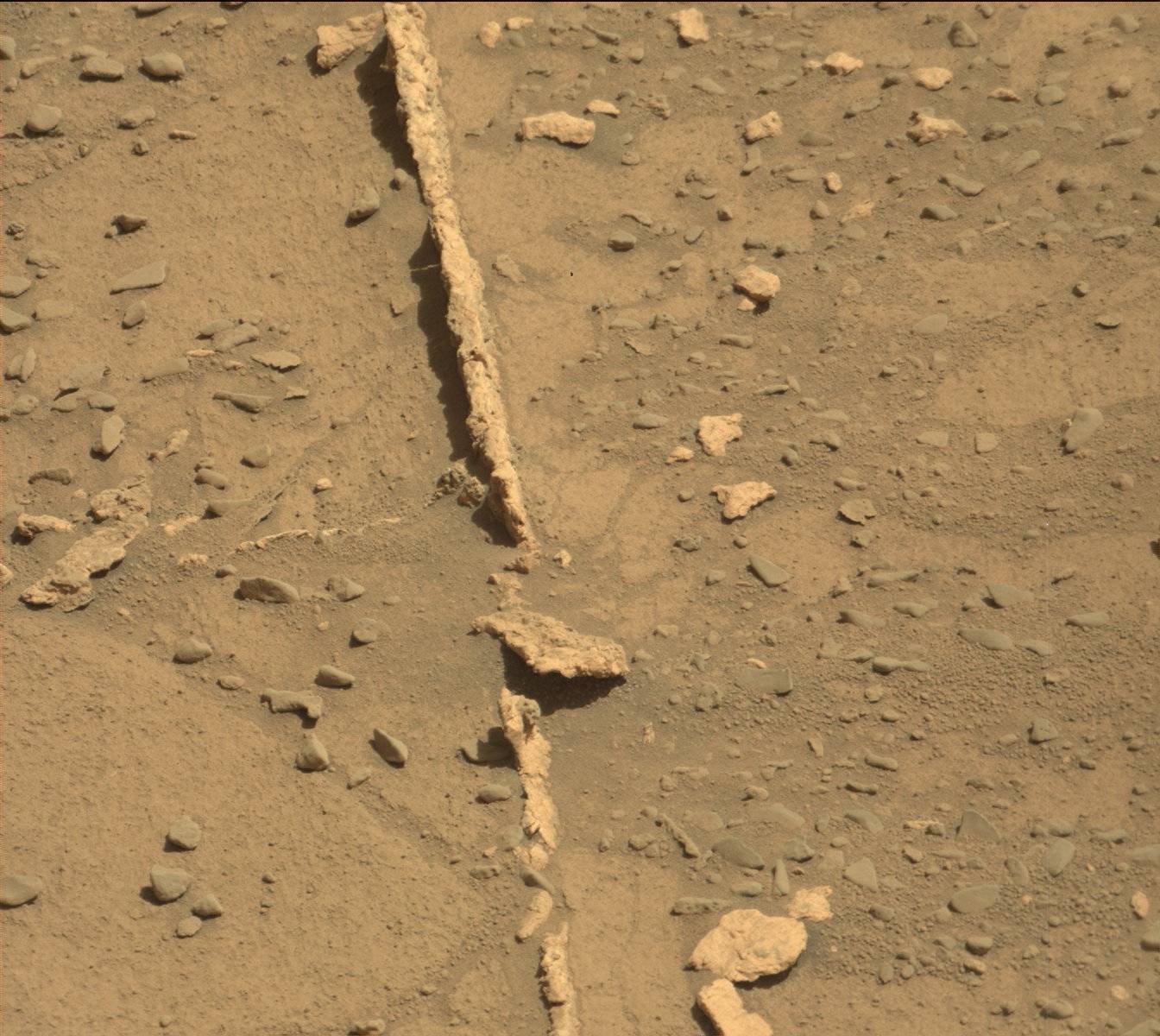Panorama from Curiosity
-
 by
HMB6EQUJ5
by
HMB6EQUJ5
http://www.jpl.nasa.gov/news/news.php?feature=4716
Posted
-
 by
mschwamb
scientist, translator
by
mschwamb
scientist, translator
Hi HMB6EQUJ5 ,
Thanks for sharing. Some lovely sedimentary rocks (about as much of a geologist as I can be 😉 ). The images from Curiosity are stunning.
Cheers,
~Meg
Posted
-
 by
wassock
moderator
by
wassock
moderator
Whats going on with the white lines? they look very much like veins of quartz in rocks back home. Whatever they clearly cross the strata and must imply that the dune got wet sometime after it solidified and cracked.
Posted
-
 by
wassock
moderator
by
wassock
moderator
There's also a very nice unconformity in the strata - they seem to have put the scale bar over where it appears to be it but you can see it clearly elsewhere - if you look closely in the bottom left you may also find that someone left a sheet of corrugated roofing behind!
Posted
-
 by
rayperry
by
rayperry
Thanks for showing me this Andy.
Some lovely geology there - typical cross-bedding characteristic of dune deposition. And yes, you're right about it looking like a quartz vein. Quartz veins are just SiO2 crystalized out of hot hydrothermal solutions injected into fissures, normally deep down but one gets the same process just below the surface resulting from low-temp salts crystalising out of solution in any available cavities, be they cracks or, as in the formation of sandstone, cavities between the sand grains.Here's a closer look at something similar:
[After crossing the Dingo Gap dune, Curiosity found some fins of material protruding from the rock. These are places where fractures within the rock were filled with a mineral precipitating out of groundwater. Since the fill formed, the rocks have been eroding due to wind. The rocks are less resistant to erosion than the fracture fill, so the fracture fill now stands up higher than the rock surface. ]

http://planetary.s3.amazonaws.com/assets/images/4-mars/2014/20140211_0538MR2122001000E1_DXXX.jpgPosted
-
 by
mschwamb
scientist, translator
by
mschwamb
scientist, translator
Hi,
Lots of high resolution with the rovers (they really are robotic geologists), that Earth geologists can now start doing what they do here on Earth on Mars which I find amazing. The previous principal investigator of Curiosity John Grotzinger got his start in Earth geology.
Cheers,
~Meg
Posted
-
 by
wassock
moderator
in response to rayperry's comment.
by
wassock
moderator
in response to rayperry's comment.
Where I'm going with this that this indicates 2 seperate time wise processes needing water. The dune forms presumably in dryconditions,do underwater sand banks show layers? Then the dune solidifies, I assume this needs some water to make it work, or could it just freeze?
. Either way the 'quartz' is in cracks in the solidified dune, I dont see how they can form in a mobile pile of sand so the quartz deposition must be a seperate event to the 'fossilisation' of the dune.Posted